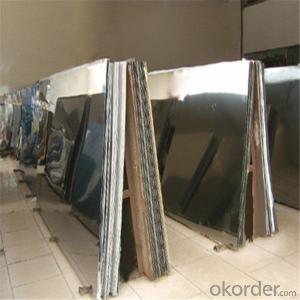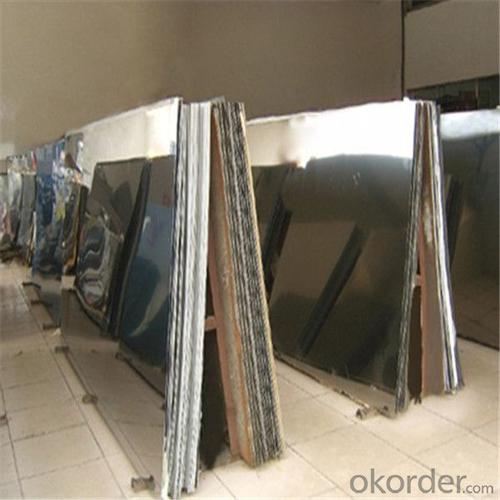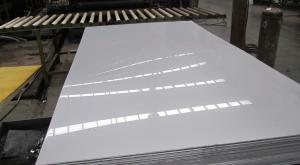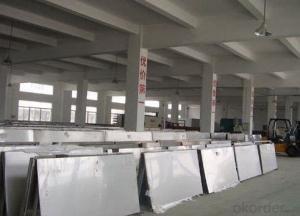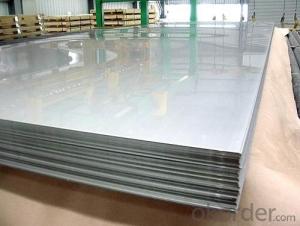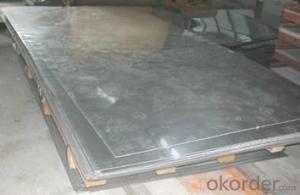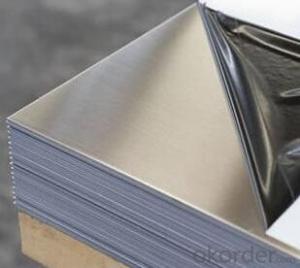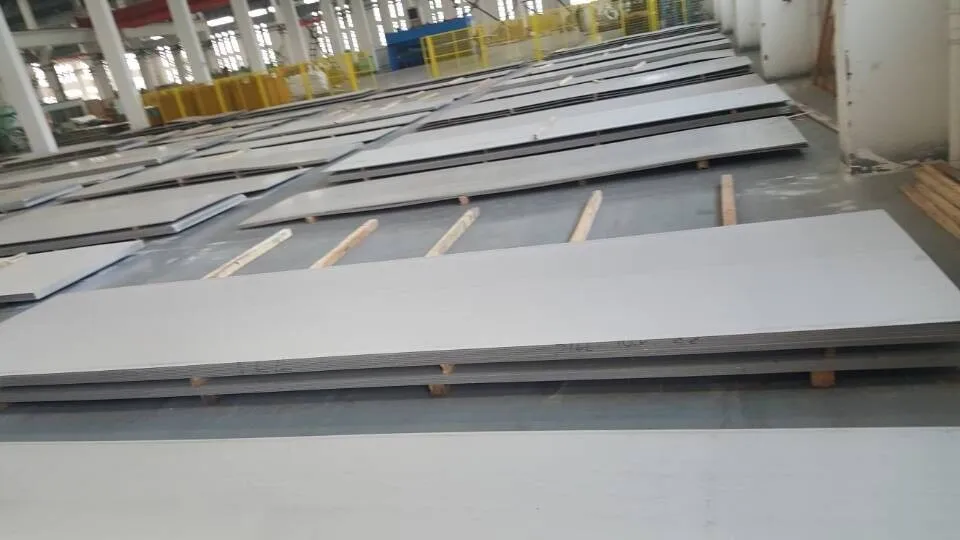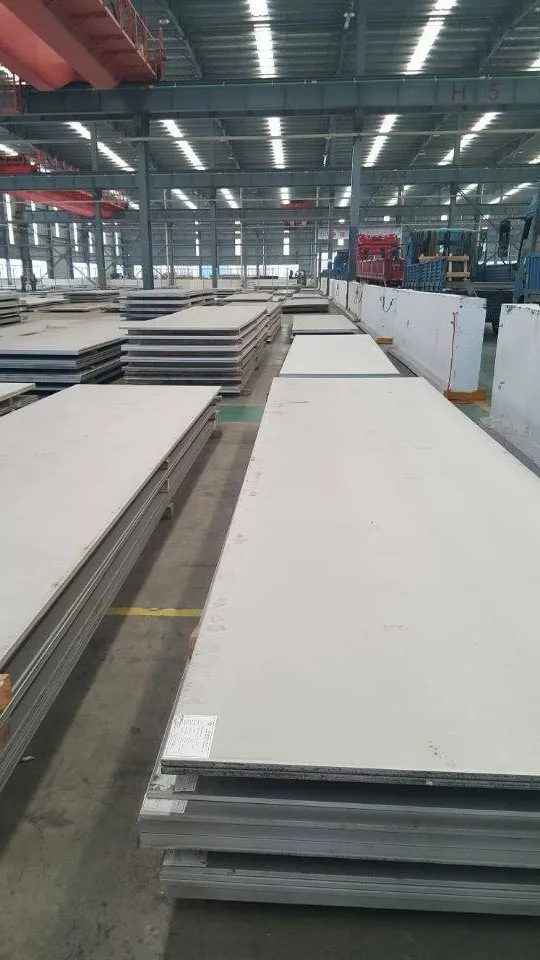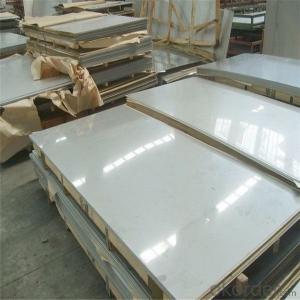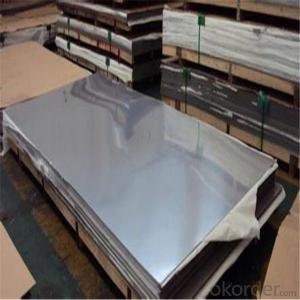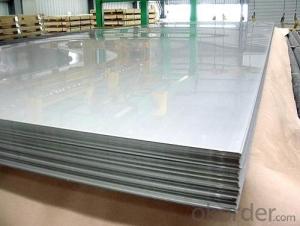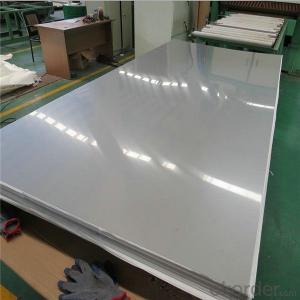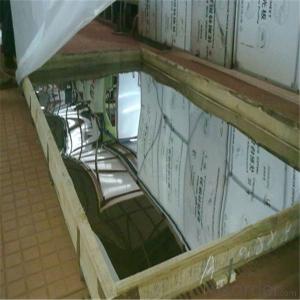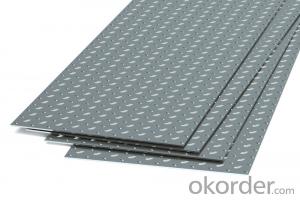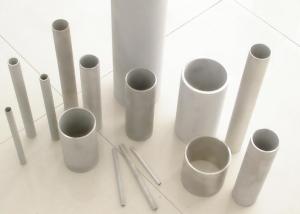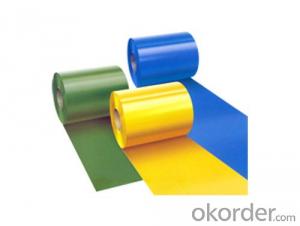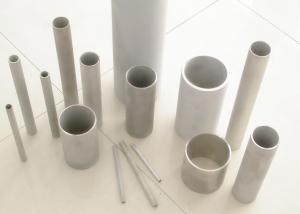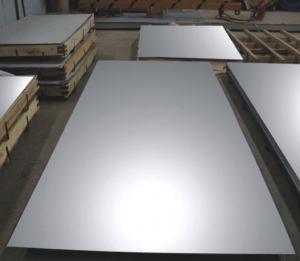Duplex 2205, 2507 Stainless Steel Sheet
- Loading Port:
- Shanghai
- Payment Terms:
- TT OR LC
- Min Order Qty:
- 3 m.t.
- Supply Capability:
- 20000 m.t./month
OKorder Service Pledge
OKorder Financial Service
You Might Also Like
Specification
duplex 2205, 2507 stainless steel sheet
We are a professional manufacturer of stainless steel sheet. According to ASTM, JIS and AISI,GB, standards, steel enhances effectiveness and of quality control from selecting the raw materials, cutting, slitting, shearing, surface treatment, packing, exporting of the existing products.
Product Description
Details of Stainless Steel Sheet/Plate: > > > > > > > > > > > > > > > > >
Commodity | duplex 2205, 2507 stainless steel sheet |
Grade | 201,202,304,304L,316,316L,310S,309S,321,301,310 |
Brand | TISCO ,BAOSTEEL,POSCO,JISCO,LISCO |
Certification | SGS, BV, IQI, TUV, ISO, etc |
Thickness | 0.2mm-40mm |
Width | 1000,1219,1250,1500mm, or as your requirements |
Length | 2000,2438,2500,3000,6000mm, or as your requirements |
Surface | No.1, 2B, BA, 8K Mirror, Hairline, Satin, Embossed, Brush, No.4, HL, Matt, PVC film, Laser film |
Standard | ASTM,AISI,SUS,JIS,EN,DIN,GB, ASME, etc |
Delivery time | 5-7 days after confirming the order |
MOQ | 1 Ton |
Advantages | Showing the splendor of your quality, wearresistant as well. Strong corrosion resistance and decorative effect, durable and beautiful in good taste. |
Surface--Application
Surface finish | Definition | Application |
2B | Those finished, after cold rolling, by heat treatment, pickling or other equivalent treatment and lastly by cold rolling to given appropriate luster. | Medical equipment, Food industry, Construction material, Kitchen utensils. |
BA/8K Mirror | Those processed with bright heat treatment after cold rolling. | Kitchen utensils, Electric equipment, Building construction. |
No.3 | Those finished by polishing with No.100 to No.120 abrasives specified in JIS R6001. | Kitchen utensils, Building construction. |
No.4 | Those finished by polishing with No.150 to No.180 abrasives specified in JIS R6001. | Kitchen utensils, Building construction, Medical equipment. |
Hairline | Those finished polishing so as to give continuous polishing streaks by using abrasive of suitable grain size. | Building Construction. |
No.1 | The surface finished by heat treatment and pickling or processes corresponding there to after hot rolling. | Chemical tank, pipe. |
Products Show
These are the normal items, for the special requirements,we can also meet.
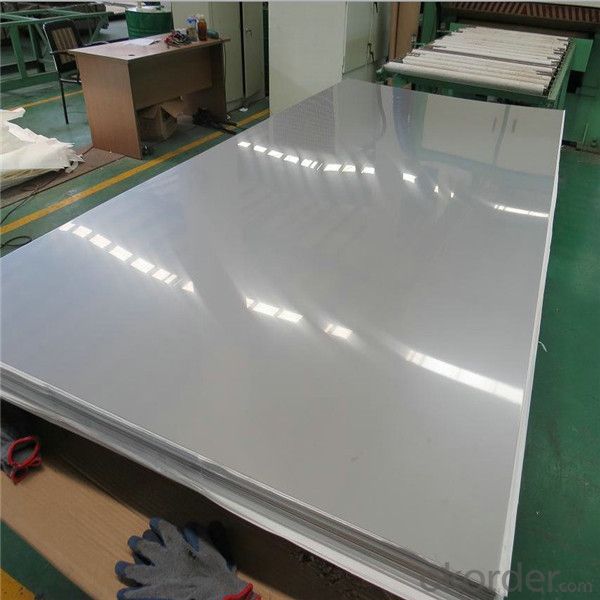
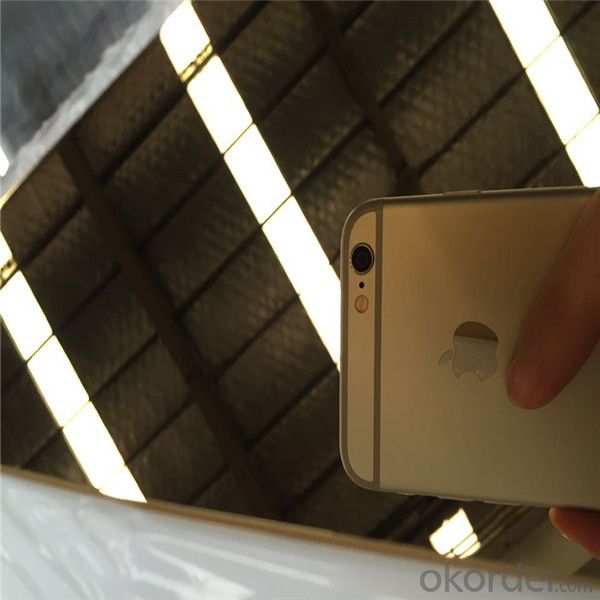
Our Advantages
• All products are made of high-quality imported raw materials.
• Our products are certified by ISO9001:2008 authentication quality systems.
• we are nominated as the AAA enterprise by Jiangsu government.
• Quick Response to Your Enquiry.
- Q: How to calculate the weight of stainless steel plate?
- Stainless steel not only refers to a stainless steel, but more than one hundred kinds of industrial stainless steel, the development of each kind of stainless steel in its specific application areas have good performance. The key to success is to find out what the purpose is, and then determine the correct type of steel.
- Q: Can stainless steel sheets be used for automotive exhaust systems?
- Indeed, automotive exhaust systems can utilize stainless steel sheets. The use of stainless steel is prevalent in exhaust systems owing to its remarkable resistance to corrosion, ability to withstand high temperatures, and durability. It successfully endures the harsh conditions present in exhaust systems, encompassing intense heat, moisture, and chemicals. Stainless steel sheets can be shaped and manufactured into diverse components of the exhaust system, including pipes, mufflers, and catalytic converters. They offer enduring performance, minimize the likelihood of rust and corrosion, and enhance the overall efficiency and longevity of the automotive exhaust system.
- Q: Can stainless steel sheets be used for decorative screens?
- Yes, stainless steel sheets can be used for decorative screens. Stainless steel is a versatile material that can be easily manipulated into various shapes and designs, making it suitable for decorative purposes. Its durability, resistance to corrosion, and aesthetic appeal make it a popular choice for creating decorative screens in homes, offices, and other spaces.
- Q: How do you polish stainless steel sheets?
- To polish stainless steel sheets, you can start by cleaning the surface thoroughly to remove any dirt or grime. Then, use a stainless steel cleaner or a mixture of mild detergent and warm water to wipe the sheets in the direction of the grain. Next, rinse the sheets with clean water and dry them with a soft cloth. Finally, apply a stainless steel polish or a mixture of vinegar and olive oil to a clean cloth, and gently buff the sheets in circular motions to restore their shine and remove any remaining stains or smudges.
- Q: What is the difference between hot rolled and cold rolled stainless steel sheets?
- The manufacturing process of hot rolled and cold rolled stainless steel sheets results in distinct characteristics and properties. Hot rolled stainless steel sheets undergo production by passing the stainless steel through a series of rollers at high temperatures. This process yields a thicker and rougher surface in comparison to cold rolled sheets. Hot rolling enables faster production and is generally more cost-effective. However, the rougher surface may necessitate additional processes, such as grinding or polishing, to achieve the desired finish. On the contrary, cold rolled stainless steel sheets are manufactured by cooling the hot rolled sheets and subsequently annealing them in a controlled environment. This process enhances the surface finish, leading to a smoother and more uniform appearance. Cold rolling also permits tighter tolerances and higher strength, making it suitable for applications that require precise dimensions and superior mechanical properties. Concerning strength and hardness, cold rolled stainless steel sheets typically exhibit greater strength and hardness in contrast to hot rolled sheets. This is due to the strain hardening that occurs during the cold rolling process. Cold rolled sheets are also less susceptible to deformation and warping, making them ideal for applications where flatness is crucial. In conclusion, the primary distinctions between hot rolled and cold rolled stainless steel sheets lie in their manufacturing process, surface finish, dimensional tolerance, and mechanical properties. Hot rolled sheets are thicker with a rougher surface, while cold rolled sheets are thinner, smoother, and possess greater strength and hardness. The selection between the two depends on the specific requirements of the application and the desired aesthetic and functional characteristics.
- Q: Can stainless steel sheets be used for chemical mixing tanks?
- Yes, stainless steel sheets can be used for chemical mixing tanks. Stainless steel is highly resistant to corrosion and chemical damage, making it a suitable material for containing and mixing various chemicals. Additionally, its smooth surface prevents the buildup of bacteria and allows for easy cleaning and maintenance.
- Q: What are the different types of surface treatments available for stainless steel sheets?
- There are several types of surface treatments available for stainless steel sheets, each serving a different purpose and offering unique benefits. 1. Mill Finish: This is the most basic type of surface treatment and refers to the finish that is achieved directly from the mill after the stainless steel sheet is manufactured. It has a smooth, dull appearance and is often used when a clean, unadorned look is desired. 2. Brushed Finish: Also known as satin finish, this treatment involves brushing the stainless steel surface with a fine abrasive material to create a pattern of fine parallel lines. This finish provides a decorative, textured look while also hiding any surface imperfections or scratches. 3. Mirror Finish: As the name suggests, this treatment creates a highly reflective surface that resembles a mirror. It is achieved through a process of polishing the stainless steel sheet with progressively finer abrasives until a glossy, reflective finish is achieved. This finish is commonly used in decorative applications where a high level of shine is desired. 4. Bead Blasted Finish: This treatment involves blasting the stainless steel surface with tiny glass beads under high pressure. It creates a uniform, matte texture with a slightly rough feel. Bead blasted finish is often used in architectural applications to achieve a modern, industrial look. 5. Etched Finish: Etching involves applying an acid or chemical solution to the stainless steel surface to create intricate patterns or designs. This treatment allows for a high level of customization and is commonly used in architectural, signage, and decorative applications. 6. PVD Coating: Physical Vapor Deposition (PVD) is a process where a thin film of a specific material is deposited onto the stainless steel surface using a vacuum chamber. This coating can provide various colors and finishes, such as gold, black, or bronze, while also enhancing the durability and corrosion resistance of the stainless steel sheet. These are just a few examples of the different types of surface treatments available for stainless steel sheets. The choice of treatment depends on the desired aesthetic, functionality, and application requirements.
- Q: Can stainless steel sheets be used for facade cladding?
- Yes, stainless steel sheets can be used for facade cladding. Stainless steel is a highly durable and corrosion-resistant material, making it an excellent choice for exterior applications such as facade cladding. It offers an attractive and modern aesthetic, with its sleek and reflective surface. Stainless steel sheets are available in various finishes, including brushed, mirror, and patterned, allowing for a wide range of design possibilities. Additionally, stainless steel is easy to maintain, requiring minimal cleaning and upkeep. Overall, stainless steel sheets are a popular and practical option for facade cladding due to their durability, aesthetic appeal, and low maintenance requirements.
- Q: Are stainless steel sheets resistant to caustic soda?
- Yes, stainless steel sheets are generally resistant to caustic soda. Caustic soda, also known as sodium hydroxide, is a highly corrosive substance, but stainless steel is known for its excellent corrosion resistance. Stainless steel contains chromium, which forms a protective oxide layer on the surface of the metal, preventing it from reacting with caustic soda. However, it is important to note that the exact resistance of stainless steel to caustic soda may vary depending on the grade or type of stainless steel. Therefore, it is always recommended to consult the specific material specifications or consult with a qualified professional to ensure the appropriate choice of stainless steel for specific applications involving caustic soda.
- Q: Are stainless steel sheets fire resistant?
- Stainless steel sheets have excellent fire resistance properties. Due to their high melting point and low thermal conductivity, stainless steel is able to withstand high temperatures for prolonged periods of time without undergoing significant structural changes or losing their strength. This makes stainless steel sheets highly resistant to fire and heat damage. Additionally, stainless steel does not release toxic fumes when exposed to fire, which further enhances its safety in fire-prone environments. As a result, stainless steel sheets are commonly used in applications where fire resistance is a critical requirement, such as in the construction of fire doors, fire escapes, and fire-resistant enclosures.
Send your message to us
Duplex 2205, 2507 Stainless Steel Sheet
- Loading Port:
- Shanghai
- Payment Terms:
- TT OR LC
- Min Order Qty:
- 3 m.t.
- Supply Capability:
- 20000 m.t./month
OKorder Service Pledge
OKorder Financial Service
Similar products
Hot products
Hot Searches
Related keywords
